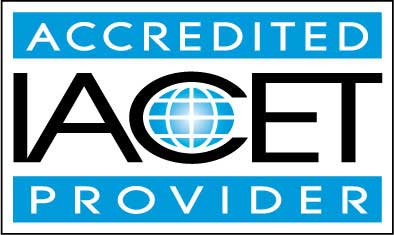Course Description
America's Pantheon of Heroes and Villains
Every epoch has its marquee names that transcend the annals of history—individuals whose deeds, for better or worse, shape the contours of their nation's saga. The United States, with its rich tapestry of narratives, is no exception. From paragons of virtue to those who danced with their darker selves, the U.S. landscape is peppered with figures who have punctuated its story, leaving indelible marks. But what alchemy of fate, choices, and national zeitgeist elevates someone into the realm of household recognition?
Dive deep into "American Heroes and Villains" to embark on an illuminating journey, one that delves into the intricate interplay of personal choices and societal context. What distinguishes George Washington's statesmanship from Charles Manson's notoriety? How do individuals like Jesse James, a legendary outlaw, and Linus Pauling, a groundbreaking scientist, find themselves immortalized in America's collective psyche?
Our course is not merely a parade of biographies. Instead, it's an exploration, an excavation of the underlying currents that cast certain individuals into the spotlight. Beyond a mere recounting of their lives, we unravel the complex tapestry of historical, societal, and personal factors that enshrined them in the pantheon of American icons.
Through meticulously crafted modules, you will:
- Delve into captivating biographical overviews of America's luminaries and those who courted controversy.
- Engage in rich analyses, discerning what renders these individuals iconic in the vast tableau of American history.
- Understand the multifaceted criteria underpinning the rise (or fall) of these personas in the nation's consciousness.
As we navigate the nuanced terrains of heroism and infamy, this exciting course promises to be more than just a history lesson. It's an invitation to a deeper understanding of the American ethos and the myriad personalities that have sculpted it.
Join us, as we unveil the tales of those who've touched the very soul of America, weaving its narrative of greatness, grit, light, and shadow.
- Completely Online
- Self-Paced
- Printable Lessons
- Full HD Video

- 6 Months to Complete
- 24/7 Availability
- Start Anytime
- PC & Mac Compatible
- Android & iOS Friendly
- Accredited CEUs

Learning Outcomes
- Describe the impact of historical era on individual behavior as discussed in the course.
- Identify key psychological factors that contribute to people becoming recognized as heroes or villains in American history.
- Define the key contributions of Amerigo Vespucci, Christopher Columbus, Henry Hudson, and John Cabot to the exploration of the New World.
- Evaluate differing historical perspectives regarding the heroism or villainy of early European explorers in the context of American history.
- Demonstrate understanding of the impact of key historical figures by summarizing their contributions to Colonial America.
- Identify and differentiate between the roles and actions of notable heroes and villains during the Colonial American period.
- Analyze the impact of Benedict Arnold's defection on American morale and the revolutionary cause during the American Revolutionary War.
- Recognize the contributions of key figures in Revolutionary America by identifying their roles and actions during the period 1763–1783.
- Compare the policies of King George III and Lord Frederick North and evaluate their impact on the American Revolutionary War.
- Identify the key contributions of John Adams to the American Revolution, including his role in the Declaration of Independence.
- Describe the impact of Shays' Rebellion on the development of federal laws and the stability of the early United States government.
- Identify and compare the political contributions of key figures in early American history, including Alexander Hamilton, Aaron Burr, and Thomas Jefferson.
- Recognize the impact of key figures from the Expansion and Reform Era on American politics and society, by identifying their roles and contributions.
- Demonstrate mastery of lesson content at levels of 70% or higher.
Assessment Guide
| Assessment | Points |
|---|---|
| Lesson 1 Assignment | 25 points |
| Lesson 1: An Introduction to America’s Heroes and Villains | 9 points |
| Lesson 2 Assignment | 25 points |
| Lesson 2: Early America | 10 points |
| Lesson 3 Assignment | 25 points |
| Lesson 3: Colonial America | 10 points |
| Lesson 4 Assignment | 25 points |
| Lesson 4: Revolutionary America, Part I | 10 points |
| Lesson 5 Assignment | 25 points |
| Lesson 5: Revolutionary America, Part II | 9 points |
| Lesson 6 Assignment | 25 points |
| Lesson 6: The Young Republic | 10 points |
| Lesson 7 Assignment | 25 points |
| Lesson 7: Expansion and Reform Era | 10 points |
| Lesson 8 Assignment | 25 points |
| Lesson 8: Civil War and Reconstruction | 9 points |
| Lesson 9 Assignment | 25 points |
| Henry Ford Racist? | 20 points |
| Lesson 9: The Wild West and the Second Industrial Revolution | 10 points |
| Lesson 10 Assignment | 25 points |
| Lesson 10: World War I | 10 points |
| Lesson 11 Assignment | 25 points |
| Lesson 11: World War II and Korea | 9 points |
| Lesson 12 Assignment | 25 points |
| Lesson 12: Post War to the End of the Century, Part I | 10 points |
| Lesson 13 Assignment | 25 points |
| Lesson 13: Post War to the End of the Century, Part II | 10 points |
| Lesson 14 Assignment | 25 points |
| Lesson 14: The New Millennium | 8 points |


